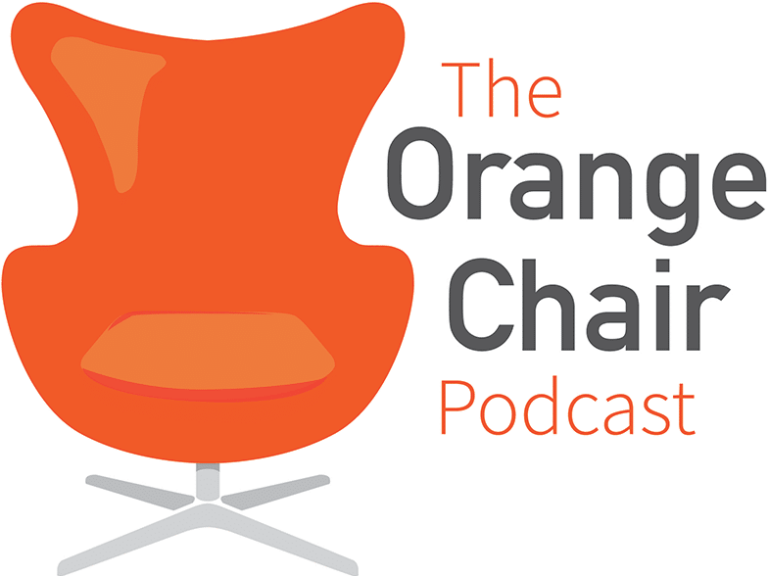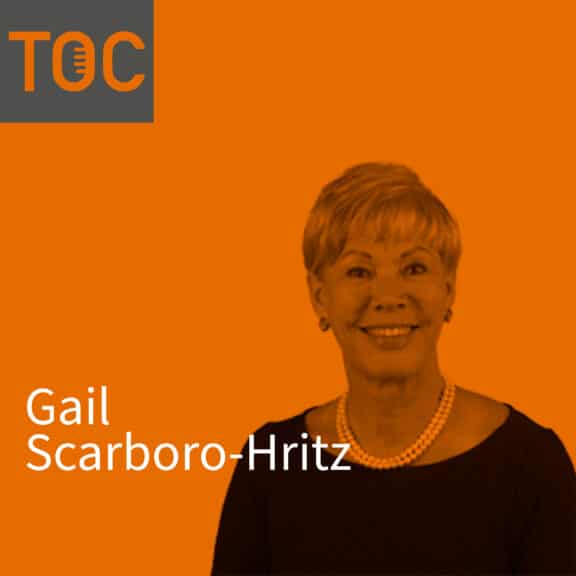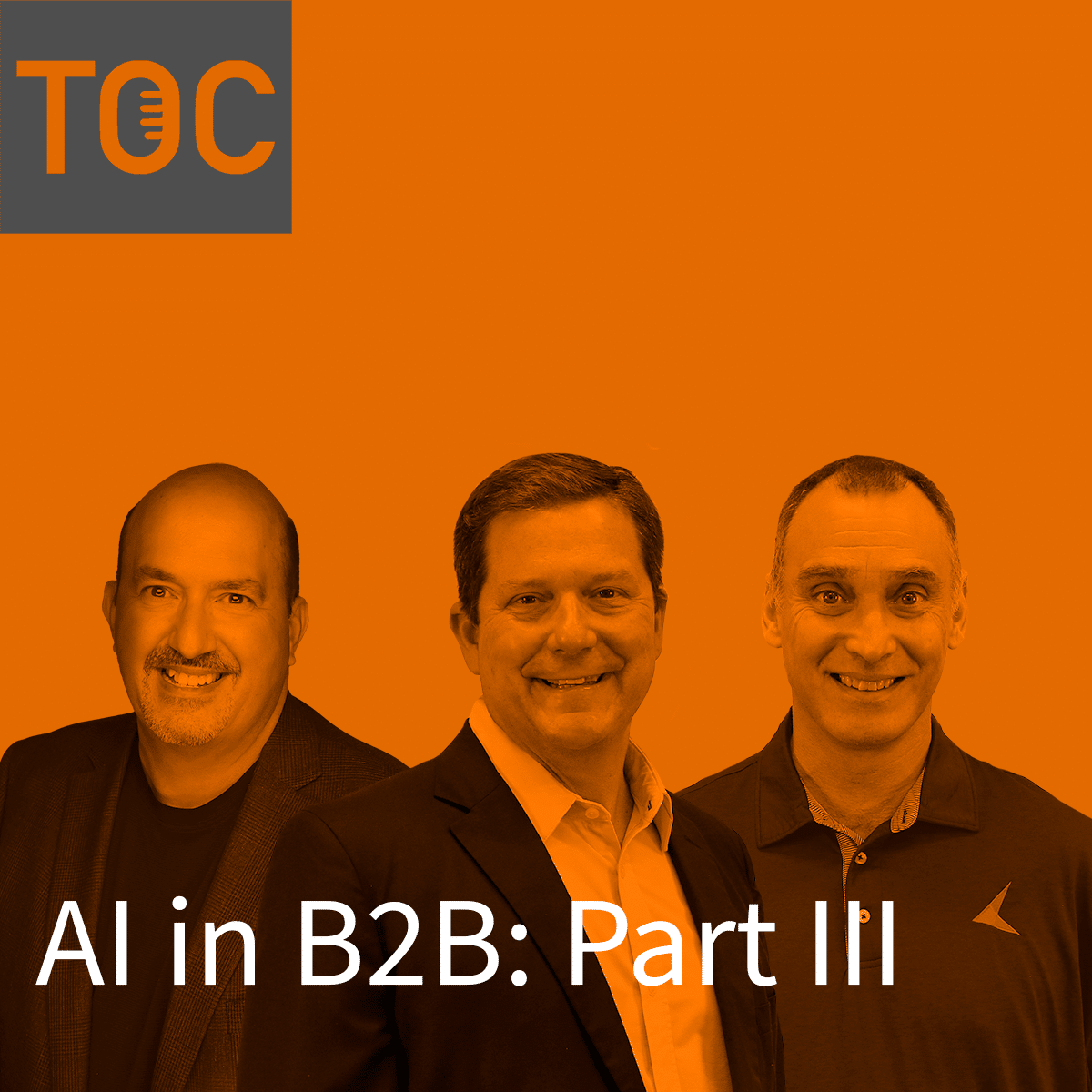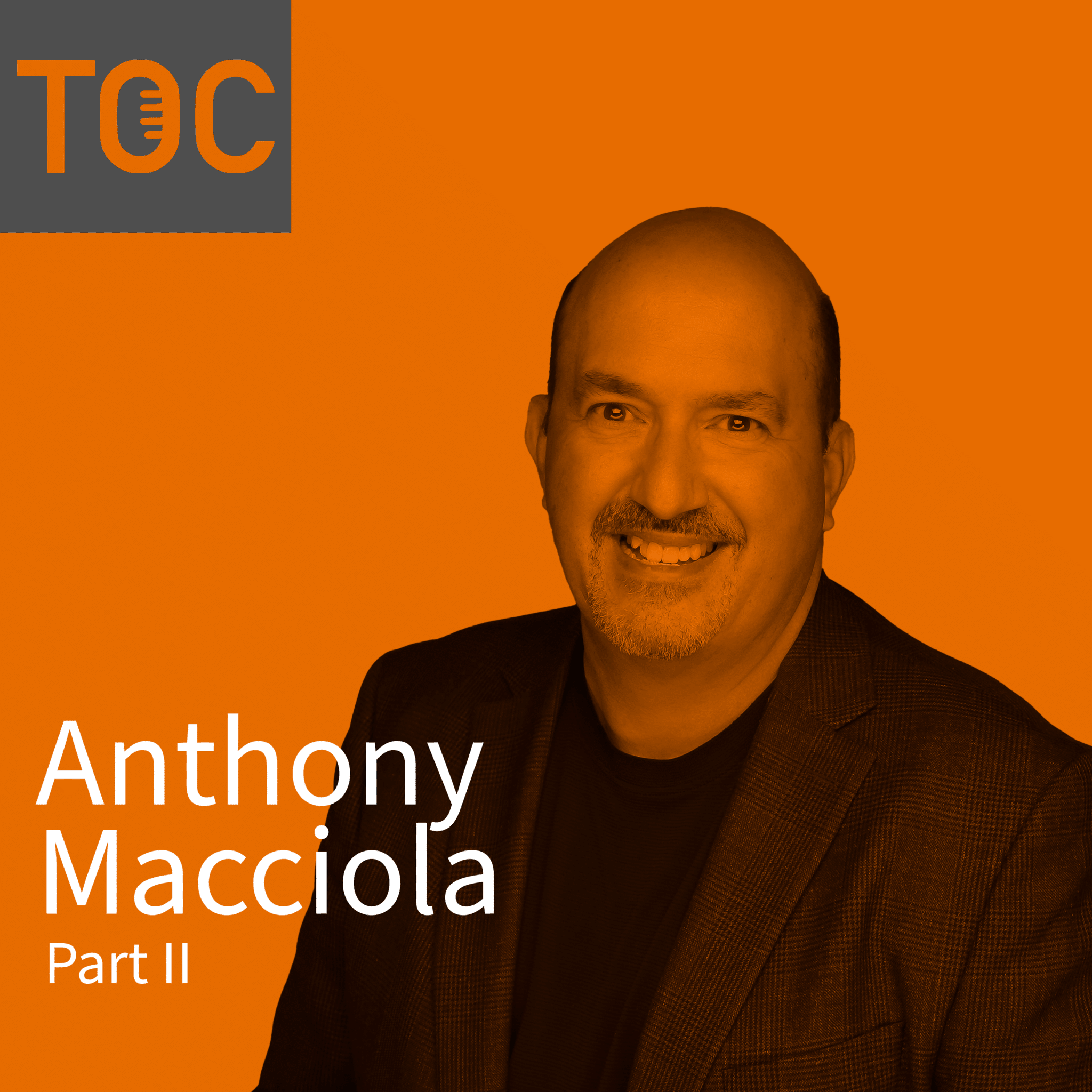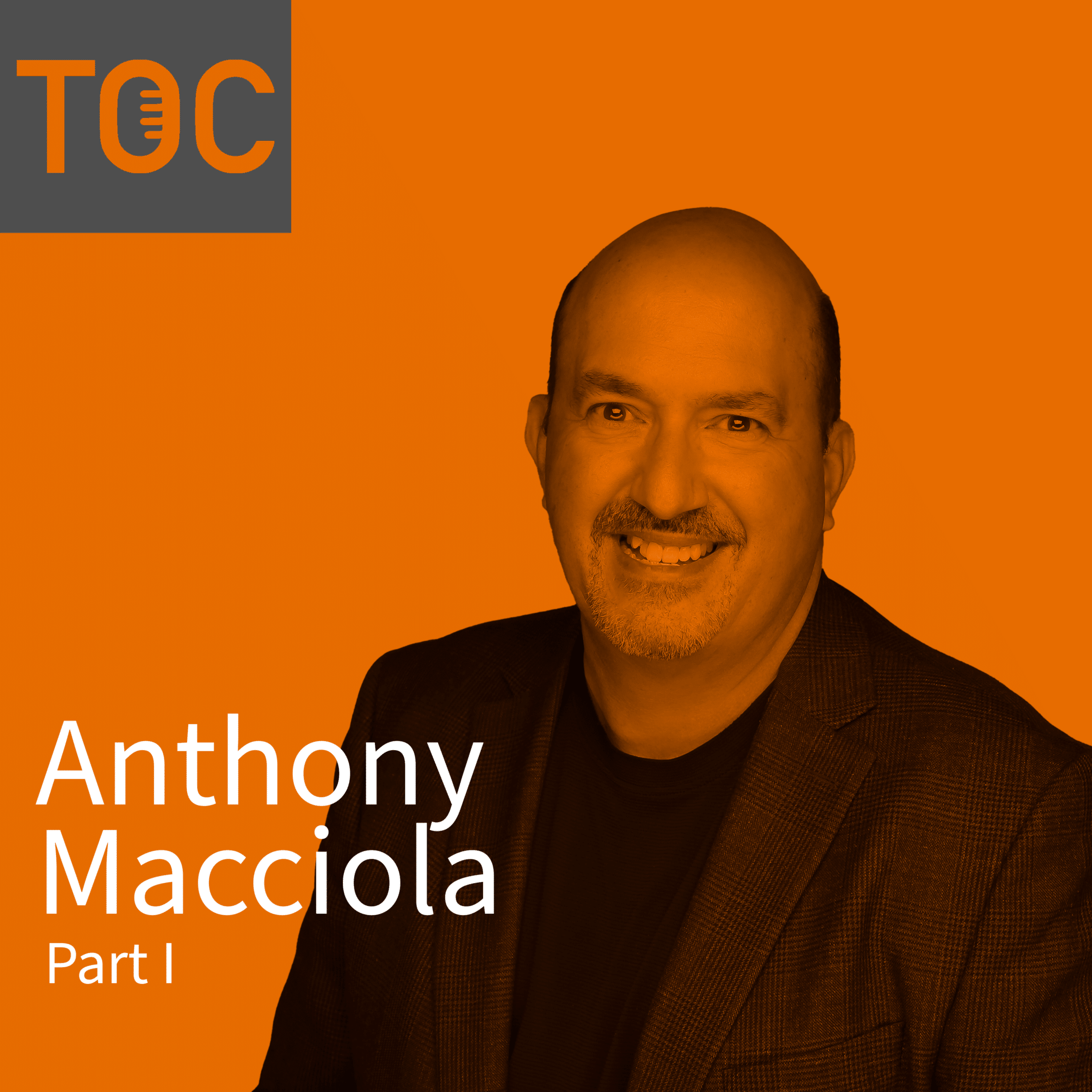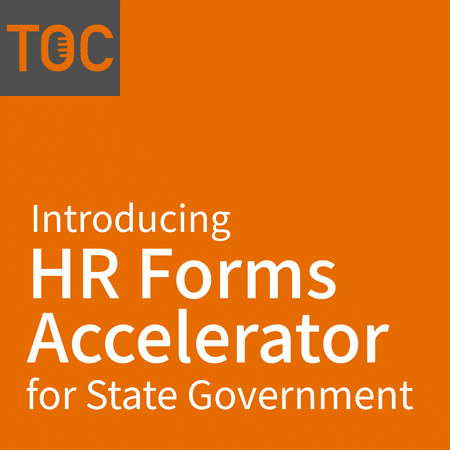Alex Frazier (18s): Hi, everybody, and welcome back to the Orange Chair Podcast. In today’s episode, I’ve got a special guest, Gail Scarboro-Hritz. She is an expert in revenue cycle and automation within the healthcare financial space. And she’s on the episode today, and we’ll be talking all about automation in the revenue cycle. So, Gail, if you could, just go ahead and introduce yourself.
Gail Scarboro-Hritz (41s): Okay. Thank you very much. My name is Gail Scarboro-Hritz, as you already know, and I appreciate being called an expert. I guess after 40 years of business one could call oneself an expert, but, my background is a long time in healthcare in the revenue cycle in particular. I’ve worked for large academic institutions, Ceveland Clinic, Medical University of South Carolina. I’m typically in a chief revenue cycle officer role, and I do have my own consulting firm. So when I do that role, it’s usually as an interim in an organization that is either seeking a permanent chief revenue cycle officer or they’re interested in a person to come in and take them through a major transition in their revenue cycle.
So, I know the revenue cycle from the ground up, have done essentially every job that’s included in the healthcare revenue cycle at one time or another. And then began to be a leader in this space about midway through my career. And then went into consulting about 12 years ago and do that independently with my old firm.
Alex Frazier (1m 59s): Great. Well, you know, I always like to kick off my episodes by asking a fun fact with my guests. So do you have a fun fact that you’d like to share with us today?
Gail Scarboro-Hritz (2m 7s): Well, I guess my fun fact is that if I picked an alternate career, which I’m not unhappy at all with the one that I landed in, that I continue to serve in, but had I picked an alternate career, I would have hoped to have been a talking head as they refer to them on the news.
I just think it looks like such a fun job and an interesting job and I’m fascinated by the news all the time myself. And so I’ve often thought, I’d like to be one of those people that gets on television and does. I guess doing it on a podcast is about as close as I’m going to get so thank you for that opportunity.
Alex Frazier (2m 47s): Of course. Yeah. I was thinking that as well that you know, you’ve kind of got a unique opportunity to sort of be a talking a talking head on this podcast, even though it’s more of a vocal thing. So it’s a talking voice if you will. Well, great. Well, thank you so much for joining the episode today and talking all about automation within the revenue cycle.
You know, I wanted to just start by saying, like, lately, there’s this common challenge I think that’s, you know, within a lot of industries and a lot of verticals, but especially within the healthcare space right now, that the common challenges to do more, with less. So I’m just wondering, you know, in your experience, what ways do you see this being a challenge within the revenue cycle specifically?
Achieving more with less
Gail Scarboro-Hritz (3m 33s): Well, it is, in fact, of doing more with less is a true challenge, throughout the healthcare revenue cycle across large systems. It’s particularly difficult for small hospitals that might not have any affiliation with a large system. Not everything is affordable to every healthcare organization, but, the bottom line is given the volume of work, we’re in a business that’s open 24/7, 365-days a year. It never closes. There’s no company that operates much like healthcare in terms of this just continuous — I know there are assembly lines and large manufacturers, in companies that keep multiple shifts going and that kind of thing, but we’re dealing with human lives 24/7 365. And as a result, the work, the administrative work that has to be done, and the clinical work that has to be done to do that kind, to have that kind of business operational at that level, it’s not just very detailed work, but there’s a lot of it.
The volume is unbelievable. So, much of it’s administrative in the revenue cycle. And so you begin to wonder, you know, how can I keep up with all of this volume and not have to hire an army? Most of us have outsourced partners that are helping us from a human resource perspective, human resource allocation perspective, outsource partners that are doing part of the work, but even that is not enough.
We have got to find a much more efficient and effective way to do some of what I call the repeatable tasks, the over and over things that we do that should not theoretically have to be done by human beings because they’re so repetitive and what needs to happen, the outcome you’re after, is so predictable.
So repetitive and predictable should be ripe for automation, and that’s why, I continue to encourage people, my clients, I know for myself when I’m sitting as a chief revenue cycle officer in an organization, I’m continuously looking for how I can use automation to relieve the burden in the revenue cycle of the repeatable and predictable activities that occur.
Alex Frazier (6m 1s): Yeah. So, you know, those repeatable activities, do you have any specific use cases or specific things that you see that kind of transcend around a lot of different organizations or with a lot of different healthcare organizations where automation could be a benefit? You know, are there, what are the specific pain points?
Automation for claims status
Gail Scarboro-Hritz (6m 20s): Well, one example that I could use is claim status in the revenue cycle. We have billers, and these billers and coders, they’re preparing claims. They’re trying to make them as clean as they can when they go out to the insurance payers so that they can be processed quickly and paid in a timely manner. All health systems are just as dependent as other businesses on cash flow and getting their money back quickly.
We’re not in the retail business where you hand me a dollar, and I give you a hamburger. That’s not what’s going on. So we’re dealing with third parties that we’re depending upon to pay us. In many cases, most people have some sort of coverage. So as we get those claims ready to go out, they go out and its called an 837 EDI file. And the payments in response to that 837 come back in an 835 file. If that 835 file does not include a payment, it’s going to include some sort of denial, some sort of status some reason code for why that claim did not pay or why the money is not coming from the insurance company but might be due from the patient.
And all of those statuses that come back in that 835 electronic file at this point, they fall into work queues. I’m gonna use Epic as an example. So most of my clients are on Epic. They fall into a work queue, and some person has to do something with those statuses. Many of those statuses could actually be handled without a person if a system knows what to do with them.
But Epic is depending on a person to work the work queue. Whereas if I had a robot or RPA, to work that work queue, it might be able to read many of those statuses and through AI, through our intelligence, some sort of intelligence within the system to know what to do with that. Does it need to go to a coder? Does it need to go to a different work queue? Does it need to be sent to the patient as patient responsibility? Claim status and statusing is one of the first things that is ripe for automation because it’s already automation. It’s just we needed some more automation on our end to know what to do with the answer that we got back from the payer.
So that’s my most immediate example.
Alex Frazier (8m 55s): Yeah. I would imagine, you know, from what you were saying earlier about the volume of things that you guys get in in a day because this is such a demanding space and industry where things are happening all the time, that the volume would be astronomical.
Gail Scarboro-Hritz (9m 11s): It is. It is. And 1000s and 1000s of transactions come back. And quite frankly, we couldn’t hire an army, nobody could, an army big enough to deal with that. Even if you have some outsource partners, that’s why we get outsourced partners because we find everything, let’s say, under $2000. Nobody’s touching it. And it just sits there. And that’s not a way to run a business. You need to respond to everything that comes in.
And so at least with some RPA, and some intelligence injected into our systems or systems that are attached to EPIC we could at least get to all the volume, or at minimum, manage the volume that must be dealt with by humans. And have the other volume dealt with by the system. But there’s no human workforce that I’m aware of that anybody has to deal with all of this, even if they have outsourced partners.
There’s still a lot left on the table. And the problem with leaving something on the table is if it never gets dealt with, it’s likely to end up in the lap of your patient and then you’ve ruined your patient experience. And we’re all, there’s not a healthcare system in this country, that isn’t deeply concerned about having the most positive patient experience for our patients that we can have because they have choices. They could go elsewhere. And we don’t we don’t want them to go elsewhere. We want them to keep coming to us for their help.
Alex Frazier (10m 45s): Right. Yeah. I’ve, you know, I’ve had a number of episodes on the podcast where we’ve talked about RPA, and just you know, how a digital workforce can help, you know, any type of of industry, but it RPA, you know, for our listeners who don’t know stands for robotic process automation. And, you know, one of my guests, couple episodes ago, mentioned how RPA is a workforce that doesn’t take time off, that doesn’t get sick, that runs 24 hours a day, 7 days a week. So that could really help with the amount of, you know, influx of documents and forms and status and all of those things that you guys have to deal with.
Benefits of RPA for healthcare
Gail Scarboro-Hritz (11m 24s): Yes. Absolutely. It’s, you know, the federal medical leave act. We have people who even have intermittent FMLA, and I’m not criticizing anyone who has an illness or a family member with a demanding illness, and they’re part of the caregiving team. But just the fact that our people have, that they’re entitled to time off, they get sick. Some of them, are higher maintenance to manage than others.
I think that’s the polite way to say that. So you have all of the difficulty and complex human problems that come with managing a human workforce and those go away, with, robotic processing.
And it helps you actually, I believe, give enrichment to your staff members because they’re working at the top of their game on the things that they have to work on, they’re less likely to have burnout, and to be bored with their jobs or turn to unproductive or nonproductive behaviors because of the tediousness of their work.
All of that that tediousness can really get to a person, a human being. And if we can take the tediousness out of their jobs, They are gonna be much happier because they’re challenged intellectually. And, from a productivity perspective, to do a great job. And that’s when people usually excel when they’re in a position that requires them to do well.
Alex Frazier (12m 59s): Absolutely. You know, I wanna talk about medical necessities and pre authorization checks. You and I talked about that on a previous call when we were discussing this podcast, can you describe, you know, using an automated solution such as RPA, how that might be an advantage when it comes to pre-authorizations?
Gail Scarboro-Hritz (13m 18s): Well, if we can automate as many of the authorization processes as possible, then our staff are not calling insurance companies, going out to insurance web portals, trying to find the right spot in the portal to put their request for an authorization in. Not all services require authorization. One of the things that often happens is our staff member goes out, sees, oh, no authorization is required for this particular procedure. Then the procedure gets done, and it wasn’t required for auth, but now we have physical therapy. Now we have rehab. Those all required authorization, and no one got it. So you have to do a much more, we have to do a much more thorough job. And, again, if some of the less demanding parts of authorization could be automated. For instance, there are many radiology procedures and imaging procedures that require authorization but it could be done system to system. They don’t need that human intervention or that discussion with a medical necessity nurse at the payer. So it’s kind of the same concept.
Let’s have our staff members work on the things that require human intervention and get the more routine, and I’m using radiology, no offense to radiology or imaging, but their authorization requirements could go on much more system-to-system than human to human than we have today.
And you mentioned medical necessity, which is very tricky, by the way. Not as simple as it sounds. Well, why would you go to the doctor and get anything done if it weren’t medically necessary? Who interprets medical necessity is very can be very different. Most doctors feel like anything they order is medically necessary or they wouldn’t have ordered it.
Well, we value their opinion, and we respect their opinion, but the payer may not see it that way. The payer may say, nope. They have to fail 1, 2, and 3 before they can ever have number 4 ordered. If you don’t know that, then you’ll go ahead and put something on the schedule and the patient hasn’t actually mapped the medical necessity requirements to have that fourth thing or that thing that the doctor has ordered.
So medical necessity in our world, the revenue cycle world is driven by the payer, not the provider’s opinion. We even have something as intense as what’s called P2P, which is peer-to-peer. That means the doctor has to talk to the doctor, the chief of the medical plan, medical staff at the plan. So sometimes our staff even requires that the physicians have to speak to the medical director at the insurance payer company in order to convince them of the medical necessity of the procedure that they wanna provide to the patient.
So let’s keep this stuff that requires all this human intervention at the top of the scale and let our talented nurses, doctors, medical reviewers do that work. And let’s get some of this lower hanging fruit, if you will, or some of these other kinds of authorizations automated such that a, I think it’s a 270. Don’t quote me on that transaction number, but we send out a transaction to the payer, they send us an answer back that never took a human to even intervene in that. Medical necessity, as I said, is a much, more complex area.
And if we even had automation that said, Okay. I’m gonna go out and scan the payer’s entire medical necessity database and bring anything back to you that looks like it might trick you or like, uh-oh, this may not look like it requires medical necessity but I see somewhere buried in all of the 1000 of pages of medical necessity requirements with payer, this may trip you up.
We don’t have anything that even comes back to tell us, this could not look as simple as it is. And, that kind of, you know, looking at some keywords 20, 30, 50. I don’t know how many, but scanning a payer’s documentation looking for certain things that might trigger a medical necessity question is very critical, and we have none of that. We have to blind people to go read medical policy. Go figure.
Alex Frazier (18m 2s): Well, I would imagine, you know, that would also improve on that patient experience that you mentioned earlier. You know, if I was needing surgery or something like that and I had all of these medical necessities that I had to meet what I didn’t know. And then I would, you know, went, and I was already up at the doctor’s office to get it, and then they tell me, oh, you can’t because you don’t have this pre-authorization.
You know, I feel like that in itself is already frustrating from a patient perspective.
So I would imagine being able to know what that is on the front end, and there’s all that visibility, and, those notifications would be better, a better patient experience.
Improving patient experience with RPA
Gail Scarboro-Hritz (18m 44s): Absolutely. The impact of these inabilities to get authorization or getting authorized but it’s not what the doctor does, the patient gets on the schedule. If you have to reschedule a surgery, you’re not just disappointing the patient about something they thought they were gonna get. They may have taken off work. They may have involved other family members in coming to help provide care. They may have pets they have to get squared away. And children they have to get squared away — when you take a patient off the schedule that’s been planned their life around coming in to do something on a certain date, even if it’s not surgery, even if it’s a big MRI or some sort of imaging series, or a cat scan, whatever it might be, they plan their life around the commitment you made for them to get that done that day.
And you call that off, how would you feel? How would I feel? Any of us feel, when we have to endure those kinds of inconveniences that might also inconvenience that any number of other people in our, you know, in our community that we’re counting on to help us with things.
So, that’s why we’re all in health care systems. We’re trying so hard to commit ourselves to pre-service financial clearance, and any automation that helps us financially clear the patient before we commit to them is a blessing to us and our patients because — we’re trying so hard to make sure we’ve got everything squared away, including telling them what their out of pocket costs might be, which involves our estimation tools, or someone needs financial assistance.
We’ve gotta clear a lot of barriers financially before we can assure our patients of what to expect. And that’s our goal.
We can’t say they might not owe anything or they might not be able to be done here. We might have to refer them elsewhere if they’re out of network for our organization. But when you do that after the fact, instead of beforehand, it rings negatively in your patient experience, and it shows in their feedback.
Alex Frazier (21m 1s): Yeah. You know, you mentioned a couple of of things that you think, you know, could be improved upon or or some different ideas where automation can come into play. And I wanted to ask, could you speak to the commitment of innovation and why, you know, that might be important when it comes to the revenue cycle.
Innovation in revenue cycle management
Gail Scarboro-Hritz (21m 18s): Wow. Innovation in the revenue cycle. Well, Let’s start off by saying that most of us in healthcare are at least 10 to 12 years behind other kinds of businesses that have gone to automation, have found ways to make their work more efficient or automated.
So we’re not just, we don’t just need to innovate, we’ve gotta catch up and innovate. Which means you’re doing, it’s harder. You know, you gotta get people, number one, who want it. There are, unfortunately, there are a lot of folks who continue to work in the healthcare revenue cycle realm who are very used to doing things a certain way. They almost look at the revenue cycle as, well, the patient just has to deal with it.
We can’t take that attitude and expect to be the number one healthcare choice in our communities, especially in organizations, it gets more and more competitive in healthcare as various systems grow and acquire others, especially in large urban areas, people are making a choice in Atlanta, for instance, the Piedmont Healthcare System, Wellstar Healthcare System, Emery. These are big choices people are making, and they wanna go where they feel like they’re gonna get the most positive patient experience, not just clinically.
To tell you the truth, patients can’t much judge their clinical unless something disastrous happens and none of us want that. You know, I can’t tell you if my X-ray looks good or not. Can you tell me if yours is? No. Unless you’re a rad-tech, I can’t tell you if my X-ray looks good or not. I can tell you, though, if I had a scheduled appointment and I was taken in on time, and I was treated respectfully, and quickly, and efficiently.
That’s how people judge patient experience. They can’t really judge what scalpel was used or what drug was used to anesthetize them. So, we have to go with the things that our patients, most of our patients, I realize some of them are clinically qualified, but most of our patients can’t judge clinical care unless something unfortunate happens, but they can certainly judge everything around their experience.
And so we have to innovate and be thinking about what our patients, not only what do they want, but what are they accustomed to? Think of all the apps on your phone that you can use for banking or investments, your telecommunications. There are so many apps that we can use mobile apps on our phones to get so many things done. And, of course, on our computers, but what if we don’t have those things in healthcare? If you’re on Epic, If the systems on Epic, they have MyChart, which is great. But even MyChart has had to innovate. They’ve had to have guests options. Not everybody wants to sign up for MyChart. Not everybody’s in it, but they still wanna make a payment.
Well, MyChart in Epic, they have begun to have guest options in their automation.
So, you know, you can purchase from any retailer when you make a purchase, at least from my experience, when you make a purchase, you’re either signed on with them as someone who’s in their guest catalog or say, continue as a guest.
We didn’t even have continue as a guest in healthcare until recently. So, innovation is critical. We have to not just be looking at this stuff. We have to be looking closely. And I wanna offer just a little more insight to that idea of innovation, if I might.
What many healthcare organizations are doing is they’re creating innovation teams. And these innovation teams are looking at things to innovate, but they’re hearing about things. They’re accepting proposals within their organizations. I wanna do this. I wanna innovate in this area. Well, you still have to find out what to innovate, and hiring 20 analysts to tell you what to innovate is not the answer if automation itself can do process and task mining.
If there are systems out there that can study your processes as they’re occurring and bring back data to you that says, this is what’s going on. And here are the five things that are happening that look highly repeatable and highly predictable. Mhmm. Why should I need a team of analysts to tell me that? Let a system analyze my processes and tell me. So real innovation to me with an innovation partner comes from what can you apply to my system where you can tell me what my automation opportunities are.
And innovation, I think, of as slightly different. Innovation is coming up with essentially whole new ideas. Like, how can I get this task done that takes me 18 employees and is basically filling out forms? That doesn’t sound right to me. That says we need innovation here. We need to be innovative here. So that concludes my innovation Sorry. I didn’t mean to go on and on about that, but I do see automation innovation. It’s two distinct things. But yet, they’re very, as well, interdependent.
Alex Frazier (27m 13s): Yeah. No. Absolutely. I would agree with that. You know, there are always things I think can be approved upon. You could have the most efficiently running system ever, but I still think that there might be some that you can always do better or things it can improve in one way or another.
And, you know, that you mentioned task mining or process mining, absolutely. Those are tools that you can put in within your system to help you understand where are your bottlenecks and what do we need to take a closer look at, or maybe you have no idea what could be improved upon and then you run a task mining solution, and you find, oh, here’s something that’s taking us way longer than it should, and it might be an easy fix. And we can put something in place right now, and it would make a bunch of people’s lives way more easier.
RPA reinforces healthcare workers
Gail Scarboro-Hritz (28m 1s): Well, and I think we have to be sensitive, also to the healthcare workforce. They have become accustomed to doing a lot of things. And tried and true human ways. We have to have ways to assure them that nobody’s trying to give their job to a robotic solution, but we need them to do a job that is more important that can’t be done by that robotic solution. So it does take — part of innovation, is also cultural transition within health care organizations.
You can’t quite get to innovation if you’ve got four hundred people, for instance, in a revenue cycle operation, who only see innovation and automation as a threat to their jobs. So you’ve got to bring these things along in parallel. If you can’t overcome resistance, it’s tough to innovate and automate.
You have to have your plan for how am I gonna bring the workforce along with me to understand this is not a threat and it’s actually a value-added thing so that we can use their skills and talents in the best way possible. So it’s a tricky landscape to navigate sometimes.
Alex Frazier (29m 28s): Yeah. I think you said it well, though. You know, as our time comes to a close today, I wanted to know, do you have any final thoughts? Was there anything that, you know, I asked that you would like to elaborate on, or was there anything that I didn’t ask that you would like to speak to?
Gail Scarboro-Hritz (29m 41s): Well, there are so many things to talk about in the revenue cycle that, to be candid with you, I can probably go on all day. But, kind of back to this human thing. This is not an issue in just the workforce. We have to, as healthcare revenue cycle leaders, we have to absolutely let go of any fears that we might have about pushing the organization, bringing new ideas and innovation and automation to the forefront. The demands of a healthcare organization are always I can assure you. They are always gonna focus on what’s clinically needed.
What is going to make us the most state-of-the-art medical enterprise we can be? And I don’t blame them for that. I wouldn’t be in healthcare if I thought they should be focused on anything else.
But because of that, oftentimes, that’s why we’re behind in innovation in the revenue cycle and other areas because it’s going to clinical expertise, medical facilities, medical tools, medical equipment that we’re always trying to make sure we give our patients the very best medical, outcomes. And so those of us in the revenue cycle, we have to be very, we have to be soldiers.
We have to be soldiers and generals, actually, in the military when you think about it, In the revenue cycle regiment, we have to be the soldiers and the leaders that step forward and say, we totally support that everything that’s really important is about our medical enterprise. But if we don’t do this well, your medical enterprise will suffer. We have to find a way to support all of it concurrently.
That’s what’s happened over the years. You set your capital spending priorities, if I might speak about capital spending for a moment, because it it feeds into this. If all of your capital expenditures are going to things that don’t help your business run, your missing opportunity. And if you need to go get more money, you should go to the street and find it by that I mean Wall Street. Or do a bond calling, do something, but find the money to chew gum and walk at the same time or the medical outcomes will ultimately, even though they’re fabulous, those of us on the business side could not have a matching great patient experience because of a leaving business processes behind. So we’ve gotta be able to chew gum and walk at the same time and maybe even rub our tummy while we’re doing it.
Alex Frazier (32m 37s): Maybe even tap your head.
Gail Scarboro-Hritz (32m 39s): Tap our heads, chew gum, rub our tummy, and walk all at the same time. And that’s not been a priority, and it’s not — please, I love this industry, I wouldn’t have been in it for long as I have, I don’t say it to criticize. I just say it to encourage health systems to understand you can’t just devote yourself to one vertical within your system, one area of need and let the others fall by the wayside because everybody pays ultimately in patient experience if we only focus on doing one thing.
Alex Frazier (33m 23s): Thank you for joining us on the Orange Chair Podcast. This podcast is brought to you by KeyMark and is produced by Clay Tuton and me, your host, Alex Frazier. For more information on RPA, please visit our website at keymarkinc.com/rpa. Again, that’s keymarkinc.com/rpa. Never miss an episode by subscribing to our podcast channels wherever you listen to podcasts.
And also, like and subscribe on Instagram and Facebook at the Orange Chair Podcast. Want to get in touch, send us an email at toc@keymarkinc.com. That’s toc@keymarkinc.com.

